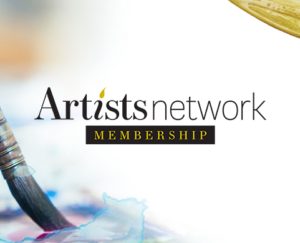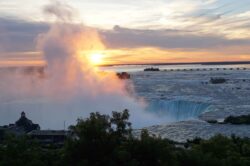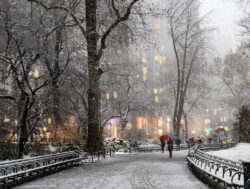Setting Up A Successful Still Life

Still lifes have been a go-to genre for artists over hundreds of years. And when it comes to creating a successful still life composition is key. Whether you’re a beginner artist wanting to master your first still life composition or a more advanced artist looking for a refresher on the fundamentals, these tips from artist Helen Oh will help set your still life up for success.
Still Life Composition 101
The word composition means “the way something is put together.” In painting, composition refers more specifically to pictorial structure, including the arrangement of colors and values in an image and the path followed by the movement of the viewer’s eye.

Here we’ll learn some basic principles for arranging the composition of a still life drawing or painting.
What you’ll need:
- Assorted objects
- Board to hold objects
- Color wheel
- Drapery
- Lazy Susan hardware
- Light source
- ViewCatcher
Using a Color Scheme in Selecting Subjects
The painter Maurice Denis said, “Remember that a painting — before being a battle horse, a nude woman or an anecdote of some sort — is essentially a flat surface covered with colors, put together in a certain order.” Before combining objects with personal or symbolic meaning, one must first work out a color scheme to evoke an emotion, then include particular objects to reinforce that meaning. The photos below show three ways of combining objects using various color schemes, each of which conveys different emotional effects.

Complementary: Colors directly opposite each other on the color wheel, for example, red and green.

Analogous: Colors adjacent to each other on the color wheel, such as yellow and green.

Triad: Three hues equidistant from one another on the color wheel, forming a perfect triangle — for instance violet, orange and green.
High or Low?


Movement, Unity, Rhythm and Focal Point
A composition can imply shapes and lines that aren’t actually present, and different arrangements of shapes produce different effects.

The photo above shows a triangular, or pyramidal, composition. A triangle is a stable geometric structure, and compositions such as these create a sense of balance. Positioning objects at the corners of the triangle momentarily stops the eye. You can select one object to be your focal point by rendering it more completely than the others.

Other approaches emphasize strong vertical, horizontal, diagonal or S-shaped lines. Repeating these lines sets up a visual rhythm. In the image above, the repetition of vertical lines and elliptical shapes creates unity and rhythm.
Thumbnail Sketches

A thumbnail sketch is a quick drawing that explores the structure and value of a composition. To create a thumbnail of your setup, look at it through a ViewCatcher. Note how the objects relate to one another and how the setup might be cropped.

On a sheet of white paper, draw the contours of the objects inside a 4- by 5-inch rectangle. Then, render the sketch in just three values: light, medium, and dark. I often draw thumbnails on buff-colored paper. Its tone provides a medium value, so I can quickly indicate darks in pencil and lights in white gouache.

Spinning Setup
Now that you have the basics of setting up a still life composition covered, it’s time to try it out for yourself! A great “still life setup hack” is to really see your subject from all angles. If you have a lazy Susan or some sort of revolving tray handy, place the hardware on a flat surface and lay a sturdy board over it. Arrange your objects and drapery on the board. By rotating the setup, you can examine it from 360 degrees before deciding on the best composition. A version of this article first appeared in Artists Magazine.
 Artists Network Membership - 1 Year
Artists Network Membership - 1 Year  Breakthrough Paint Along: Where Mixed Media Combine Together
Breakthrough Paint Along: Where Mixed Media Combine Together  Paint Along 127: Paint the Motion of the Sea
Paint Along 127: Paint the Motion of the Sea  Breakthrough Paint Along: The Big Value of Miniature Landscapes
Breakthrough Paint Along: The Big Value of Miniature Landscapes  Portrait Painting: Rembrandt's Techniques Video Download
Portrait Painting: Rembrandt's Techniques Video Download  Figure Drawing Tips with Brent Eviston Video Download
Figure Drawing Tips with Brent Eviston Video Download  Southwest Art August/September 2025 Digital Edition
Southwest Art August/September 2025 Digital Edition  Artists Magazine July/August 2025 Digital Edition
Artists Magazine July/August 2025 Digital Edition  Pastel Journal Summer 2025 Digital Edition
Pastel Journal Summer 2025 Digital Edition  Artists Magazine March/April 2025 Digital Edition
Artists Magazine March/April 2025 Digital Edition  Artists Magazine January/February 2025 Digital Edition
Artists Magazine January/February 2025 Digital Edition  Best of Watercolor: Winners of the Splash 26 Competition Print Edition
Best of Watercolor: Winners of the Splash 26 Competition Print Edition  Southwest Art June/July 2025 Print Edition
Southwest Art June/July 2025 Print Edition  Artists Magazine May/June 2025 Print Edition
Artists Magazine May/June 2025 Print Edition  Southwest Art 2021 Digital Collection × 1
Southwest Art 2021 Digital Collection × 1  Watercolor Artist 2020 Digital Collection × 1
Watercolor Artist 2020 Digital Collection × 1  Watercolor Artist 2019 Annual Digital Collection × 1
Watercolor Artist 2019 Annual Digital Collection × 1  Watercolor Mega Magazine Collection × 1
Watercolor Mega Magazine Collection × 1  Pastel for Beginners Workshop
Pastel for Beginners Workshop  Composition & Design for Landscape Painting Video Workbook
Composition & Design for Landscape Painting Video Workbook  Drawing Mastery: Shading Course
Drawing Mastery: Shading Course  Alla Prima Bootcamp: 4 Weeks to Confident Painting Course
Alla Prima Bootcamp: 4 Weeks to Confident Painting Course  Eight Greats: The Pastel Journal's 10th Anniversary Artist Interview Series Digital Download
Eight Greats: The Pastel Journal's 10th Anniversary Artist Interview Series Digital Download  Secrets of Hyperrealist Watercolor Course
Secrets of Hyperrealist Watercolor Course  Acrylic Artist Summer 2017 Digital Edition
Acrylic Artist Summer 2017 Digital Edition  Exploring Acrylic: Abstract Art in Action Video Download
Exploring Acrylic: Abstract Art in Action Video Download  WetCanvas Live! Paint Stunning Landscapes from Photos: Lesson 23 & 24 Video Download
WetCanvas Live! Paint Stunning Landscapes from Photos: Lesson 23 & 24 Video Download  WetCanvas Live! Paint Stunning Landscapes from Photos: Lesson 9 & 10 Video Download
WetCanvas Live! Paint Stunning Landscapes from Photos: Lesson 9 & 10 Video Download  The Whimsical Face with Jane Davenport Video Download
The Whimsical Face with Jane Davenport Video Download  Mixed-Media Faces Made Easy Video Download
Mixed-Media Faces Made Easy Video Download  What It Takes to Teach Video Download
What It Takes to Teach Video Download  On the hunt for found objects: How to Create New and Eclectic Molds Video Download
On the hunt for found objects: How to Create New and Eclectic Molds Video Download  Urban Sketching: Drawing People in Places Video Workbook
Urban Sketching: Drawing People in Places Video Workbook  Graffiti Grunge Art by Jodi Ohl Video Workbook
Graffiti Grunge Art by Jodi Ohl Video Workbook  Portraits: From Good to Great Video Download
Portraits: From Good to Great Video Download  Low-Tech Metal Apps: Wire, Foil, Mesh, & Screen Video Download
Low-Tech Metal Apps: Wire, Foil, Mesh, & Screen Video Download  Paint Along 126: Simplify Your Landscapes with a Limited Palette
Paint Along 126: Simplify Your Landscapes with a Limited Palette  Experimental Pastel Techniques with Dawn Emerson Video Download
Experimental Pastel Techniques with Dawn Emerson Video Download  Painting Patterned Trees Video Download
Painting Patterned Trees Video Download  Paint Along 125: Paint the Charming Towns of Italy
Paint Along 125: Paint the Charming Towns of Italy  Essentials of Painting Still Lifes
Essentials of Painting Still Lifes  7 Days to a Steady Journal Practice Video Download
7 Days to a Steady Journal Practice Video Download 















Join the Conversation!